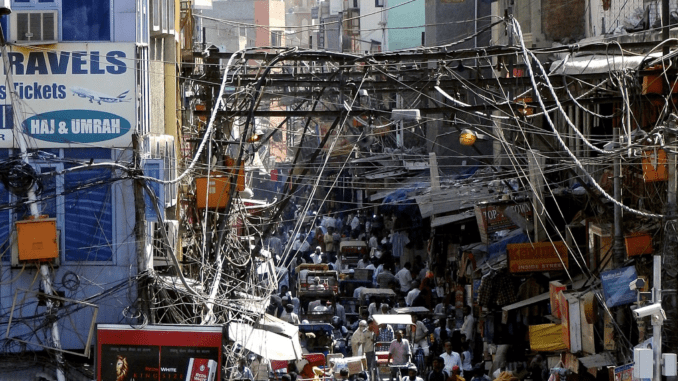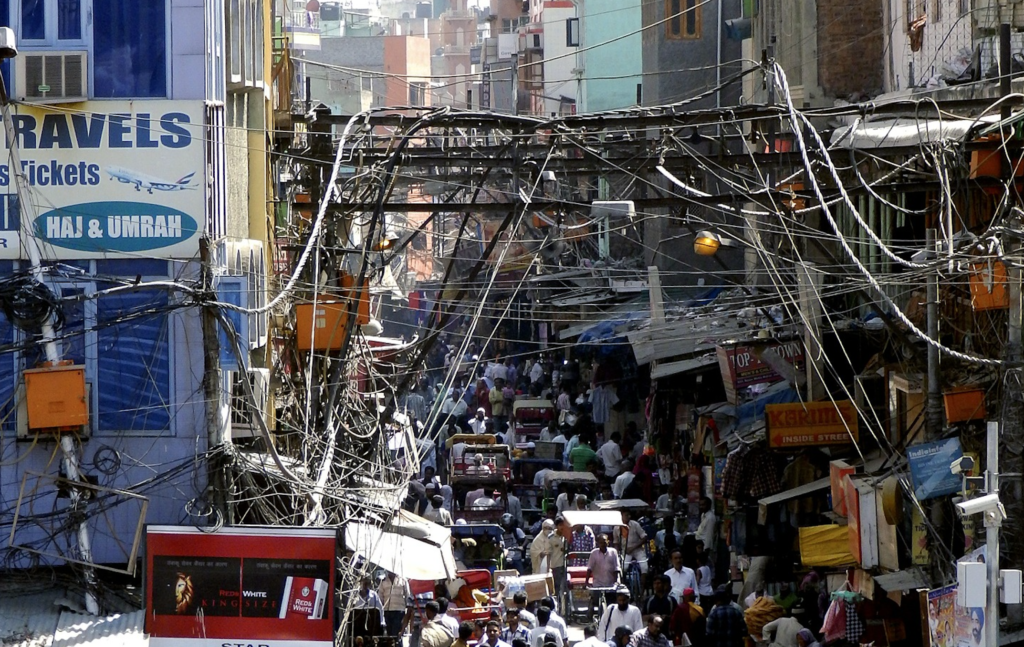
India has a contract problem – one where the use of smart contracts could play a significant role in providing greater trust and massively increasing efficiency.
The central challenge is this: the court system of this huge nation of 1.3 billion people is clogged with property disputes, primarily because of an ownership register that is heavily overloaded and struggles to meet needs. It is also reported that many people don’t trust that key property data is being accurately recorded or that contracts are lawfully enforced.
At present, around 65% of civil cases handled by district courts in India are land and property-related cases, and in a nation this size that represents a significant challenge.
Writing for the World Economic Forum (WEF) as part of its India Economic Forum – Innovating for India programme, Punit Shukla Project Lead, Artificial Intelligence and Machine Learning, WEF, C4IR India, sets out the argument for introducing smart contracts to help reduce India’s flood of property disputes.
The World Economic Forum’s Centre for the Fourth Industrial Revolution is also scoping a project that would build a governance framework for smart contract interoperability between blockchain systems and non-blockchain systems. Read on….
—
Introduction: The Need for Contract Enforcement
According to Milton Friedman, the 1976 Nobel Laureate for economics, the three primary functions of a government are: law and order, defence, and contract enforcement.
Contract enforcement is a primary driver of an economy where all economic transactions are basically contracts between two or more parties, including governments. The current role of contract enforcement by governments is performed primarily through enacting laws and setting regulations about how parties under a contract should behave.
Unsurprisingly, the majority of the enforcement is done in a manner of deterrence – setting up penal provisions for parties who violate agreed standards of contract performance and enforcing those provisions after adjudication.
Away from regulation and adjudication, we haven’t yet realized that technology can be a major instrument of enforcement. It’s time to dive into the age of smart contracts that can transform how contract enforcement is done.
It is slightly unfortunate that Bitcoin and other cryptocurrencies dominate the discussion around the disruptive technology of distributed ledgers, especially blockchain. Blockchain is not just a database technology – it is a very inefficient database if one views it as such – but a way to establish trust between multiple parties which may or may not have an aligned interest. What’s more, it achieves this without the use of an intermediary.
As Friedman suggests, governments are the biggest intermediaries of the traditional mode of contract enforcement and spend significant resources on it. However, the trust of economic agents (investors, entrepreneurs and consumers) in the enforcing intermediary to be effective, efficient and unbiased is a crucial determinant of a well-functioning economy.
India’s tremendous improvement in the World Bank’s Ease of Doing Business Index is still marred by low improvement in contract enforcement. In this aspect, India comes 172nd out of 190 countries. As it grapples with a limited capacity for adjudication, smart contracts could be the silver bullet not just for India but many other countries.

Enter Smart Contracts
Smart contracts are programmatic functions executed when certain specified conditions are fulfilled. These self-enforceable protocols written in code are powered by asset or transaction registries on a decentralized ledger, thus removing the chance of any corruption in the registry information. These contracts eliminate the chances of non-performance of the contract by either party, so no legal mechanism is required to enforce the contract.
Take, for example, a transaction of a land asset between a buyer and a seller – a smart contract is encoded and deployed on the blockchain to transfer the title of the landholding from the seller to the buyer.
The contract scans the distributed registry of land assets, verifies the title ownership claim of the seller, validates if the buyer has adequate capital to buy the land, initiates a payment debit, confirms a credit to the seller’s account, ensures the land duties and taxes are deducted and paid to the state (assuming the state agency is a participant node on the blockchain) – and then transfers the land title ownership to the buyer and adds that information to the registry.
This process eliminates the chance of non-performance as it is self-executing and non-repudiating (the parties to the contract can’t deny the contract execution or failure). Since performance is now mandated by technology, parties will not experience breach of contracts leading to court disputes.
A crucial question that arises here is why this can’t be done through a centralized platform instead of a decentralized ledger? That is where the issue of trust comes in. Taking the case of land assets further, the state maintains the Record of Rights (RoR) – a registry of land assets in India. However, the RoR is not definitive proof of land ownership (known as ‘presumptive land titling system’).
It is interesting to note that a land titling transfer in many states in India involves a notice broadcast by the administration to check for an objection or counterclaim from the extended community of residents in the area. In effect, this is a physical form of “consensus protocol” where validation of the transaction is done by the community (or invalidation is reported).
As two-thirds of civil cases handled by district courts in India (district courts contribute over 80% of all pending cases) are land and property-related cases, low trust in the government-maintained RoR becomes evident.

A Decentralized Registry
Building a decentralized registry of land and property assets and enabling the community to engage with smart contracts could unlock the potential of the land/asset market in India.
But the power of blockchain and smart contracts is only fully realized when they can reliably interact with other external, non-blockchain systems. In the “real” world where data is rarely generated and stored on a distributed ledger, smart contracts need governance models to harmonize inter-system communication.
Many national systems (citizen service portals, ID systems, real-time payments systems, property and land registries, insurance and welfare schemes) are major infrastructural platforms for a country. While the coding capability of smart contracts has progressed from just being able to execute currency-like transactions to full programmability, it is still not able to code for all possible contract scenarios. The innovative potential of blockchain, therefore, to drive efficiency and transparency can only be realized if smart contract systems can communicate reliably with non-blockchain systems and auto-execute transactions.
An example of potential inter-system communication is integrating smart contracts with India’s payment service UPI (Unified Payments Interface, a mobile-first, real-time, peer-to-peer, account-to-account payment system). With this in place, smart contracts could transfer insurance claims to farmers in case of weather-induced crop damage, completely eliminating human discretion by integrating with satellite data to validate crop damage and transfer the claim to the farmer’s bank account by UPI.
The World Economic Forum’s Centre for the Fourth Industrial Revolution is scoping a project that would build a governance framework for smart contract interoperability between blockchain systems and non-blockchain systems.
Such a model will allow blockchain projects to scale faster and be production-ready more quickly. Interoperability standards and communication protocols can help solve the problems inherent in many use cases, such as disintermediation and reduction in leakages of welfare transfers, real-time settlement of economic incentives for renewable energy produced and contributed to the grid and even executing Rupee denominated smart contracts by using the UPI payment platform.
It is high time that we look at technology to revamp our existing mechanisms of the third government function – contract enforcement.
—
Punit Shukla, Project Lead, Artificial Intelligence and Machine Learning, World Economic Forum, C4IR India. The views expressed in this article are those of the author alone and not the World Economic Forum. The article was first published by the WEF and is republished here under the organisation’s terms of use.